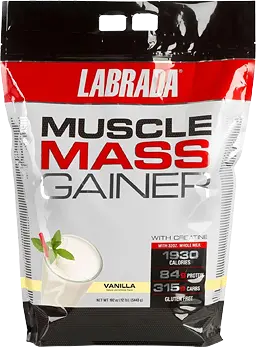Knowledge BaseYou're Questions Answered
Can I substitute protein powder for flour?
Yes, you can substitute protein powder for flour in various recipes, but it’s important to know that the substitution ratio, type of recipe, and the protein powder used will influence the final result. Whey, soy, pea, and rice protein powders are commonly used for this purpose, each offering unique properties that affect texture, flavor, and baking behavior. Generally, protein powder can replace up to 1/3 of the flour in recipes like pancakes, muffins, and cookies1. However, protein powder lacks the gluten found in flour, which affects the structure and elasticity of baked goods.
How to Use Protein Powder as a Flour Substitute
- Start with a 1/3 Substitution Ratio
Begin by replacing up to 1/3 of the flour with protein powder. This amount typically provides enough protein without compromising the texture or structure of the final product1. For example, if a recipe calls for 1 cup of flour, try substituting 1/3 cup of protein powder and 2/3 cup of flour. - Adjust Liquids
Protein powder tends to absorb more liquid than flour. You may need to add more liquid to your recipe, such as milk, water, or even an extra egg, to maintain the right batter consistency. - Experiment with Binders
Since protein powders lack gluten, which helps with structure and elasticity, adding binders like eggs, mashed bananas, or applesauce can improve the texture and prevent crumbliness in baked goods4.
Types of Recipes Suited for Protein Powder Substitution
- Pancakes and Waffles: These are ideal for protein powder substitution because they don’t rely heavily on gluten for structure. You can easily swap 1/3 of the flour for protein powder without drastically altering the recipe.
- Cookies and Muffins: Protein powder works well in cookies and muffins, but be mindful of the texture. You may need to experiment with different types of protein powder (e.g., whey vs. plant-based) to find the best result.
- Brownies and Energy Bars: These dense, moist recipes are perfect for protein powder substitution. The added protein can enhance the nutritional value while maintaining the desired texture.
Which Types of Protein Powder Work Best for Substituting Flour?
- Whey Protein Powder
Whey protein is popular due to its smooth texture and mild flavor. It mixes easily, making it a good option for substituting in baked goods. However, whey protein browns more quickly than flour, so you’ll need to reduce the baking temperature or time to avoid burning2. It also absorbs liquid faster, so you may need to add more liquid to your recipes to achieve the desired consistency. - Plant-Based Proteins (Pea, Rice, Soy)
Plant-based protein powders, such as pea, rice, and soy, are ideal for those following vegan diets or avoiding dairy. These powders tend to be denser than whey, so they may produce a heavier texture in baked goods. Pea protein, for instance, is relatively neutral in flavor but may require more liquid in the recipe due to its absorbent nature. Rice protein, on the other hand, has a slightly grainier texture but can blend well in recipes like pancakes or energy bars3. - Unflavored and Raw Protein Powders
For baking, it’s best to use unflavored or minimally sweetened protein powders, especially if you don’t want to alter the flavor of the recipe. Unflavored whey or plant-based proteins (like raw pea or hemp powder) are excellent choices for substituting flour without introducing unwanted flavors. Sweetened or flavored protein powders (e.g., vanilla or chocolate) can be used but might alter the taste of the recipe in unexpected ways.
Substituting protein powder for flour can be a great way to boost the protein content of your baked goods and snacks. Whey and plant-based proteins like pea or rice work well depending on your dietary preferences, though it’s generally best to use unflavored or minimally sweetened powders to avoid altering the taste of the recipe. Start by replacing up to 1/3 of the flour with protein powder and adjust the liquid and binding agents as necessary. Always experiment with small batches to ensure you get the best results for your particular recipe.
- Phillips, S. M. (2017). Dietary protein requirements and adaptive advantages in athletes. British Journal of Nutrition, 108(S2), S158-S167.
- Young, V. R., & Pellett, P. L. (1994). Plant proteins in relation to human protein and amino acid nutrition. The American Journal of Clinical Nutrition, 59(5 Suppl), 1203S-1212S.
- Hager, A.-S., Wolter, A., Czerny, M., Bez, J., Zannini, E., Arendt, E. K., & Becker, T. (2012). Investigation of product quality, sensory profile and ultrastructure of breads made from a range of commercial gluten-free flours compared to their wheat counterparts. European Food Research and Technology, 235, 333-344.
- Smith, J. P., Daifas, D. P., El-Khoury, W., Koukoutsis, J., & El-Khoury, A. (2004). Role of protein in sports nutrition. Nutrition Research Reviews, 17(2), 233-244.
Related Questions
Related Reviews
Protein vs Protein

Your Answer
We are a participant in the Amazon Services LLC Associates Program, an affiliate advertising program designed to provide a means for us to earn fees by linking to Amazon.com and affiliated sites.